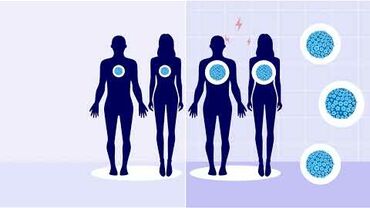Facts about infections acquired in intensive care units
Background
Surveillance of infections acquired in ICUs specifically targets a group of patients at high risk of morbidity and mortality associated with healthcare-associated infections (HAI). It is one of the most frequently implemented surveillance protocols in the national networks for the surveillance of HAI.
The ECDC network for surveillance of HAI in ICUs collects data from the national HAI surveillance networks on the incidence of ICU-acquired pneumonia, bloodstream infections, urinary tract infections and catheter-related infections. The network also collects data on common antimicrobial resistance markers in microorganisms responsible for ICU-acquired infections and, optionally, on antimicrobial use in the ICU.
Objectives
The primary objective for a hospital or an ICU to participate in a national network for surveillance of ICU-acquired infections is to compare its own infection rates to those of other hospitals/ICUs. This supports sharing of best practices and allows assessing the effect of infection control measures.
The objectives at the national and the EU level are:
- To set up reference tables for risk-adjusted, inter-ICU comparisons of indicators of ICU-acquired infections.
- To follow-up trends in infection rates.
- To describe the risk factors and the microorganisms associated with ICU-acquired infections by type of ICU.
At the EU level, the additional objectives are:
- To describe the epidemiology of ICU-acquired infectons and surveillance practices by country
- To work towards further harmonisation of surveillance methods
- To contribute to the further extension of the surveillance of ICU-acquired infections in EU Member States.
Methodology
The ECDC HAIICU protocol for the surveillance of HAI in ICUs is based on the surveillance protocol developed by the HELICS (Hospitals in Europe Link for Infection Control through Surveillance) network. The HELICS-ICU surveillance protocol was developed by national experts in the surveillance of ICU-acquired infections in collaboration with several members of the Infection Section of the European Society of Intensive Care Medicine (ESICM). Since only minor changes were applied to the protocol by the national HAI-Net surveillance contact points before its integration in the TESSy system, data collected using the HELICS-ICU protocol are fully compatible with the ECDC HAIICU protocol.
The ECDC HAIICU protocol comes in two versions:
- Patient-based (or “standard”) protocol: patient-level data are collected for each patient whether there is an infection or not.
The data includes risk factors that allow for risk-adjusted, inter-hospital comparisons.
- Unit-based (or “light”) protocol: selected patient-level data are only collected for infected patients.Denominator data (patient-
days) are collected each day for the entire ICU.
To improve the quality of inter-ICU/inter-hospital comparisons, infection rates must be risk-adjusted so that variations due to differences in patient case-mix are reduced. Therefore, the patient-based (“standard”) protocol is the recommended method for surveillance.
However, the unit-based (“light”) protocol is less labour intensive and requires less resources.The protocol can be used when surveillance resources are scarcesince surveillance of ICU-acquired infections must be carried out over long periods to stabilise confidence intervals of infection rates. All indicators generated from data obtained with the unit-based (“light”) protocol can also be generated from data obtained with the patient-based (“standard”) protocol. Therefore, both types of data collection may be combined within a country or even in the same hospital (although not during the same surveillance period).
The HAI case definitions developed by European surveillance experts have recently been the subject of a study, funded by ECDC, The study assesses the concordance of the IPSE/HELICS case definitions of pneumonia and bloodstream infections with the case definitions of the National Healthcare Safety Network (NHSN) of the US Centers for Disease Control and Prevention (CDC).Results showed that the case definitions are no obstacle to comparing data between the two surveillance systems. But certain conditions with regard to sub-categories of cases need to be respected and other differences in the surveillance methodology - taken into account.
HelicsWin.Net is a free software application developed by ECDC for the manual entry of data from ICU surveillance using the ECDC HAIICU protocol, CDI surveillance and from the ECDC PPS. Data are stored on the user’s computer until the user chooses to export the data from the software.



